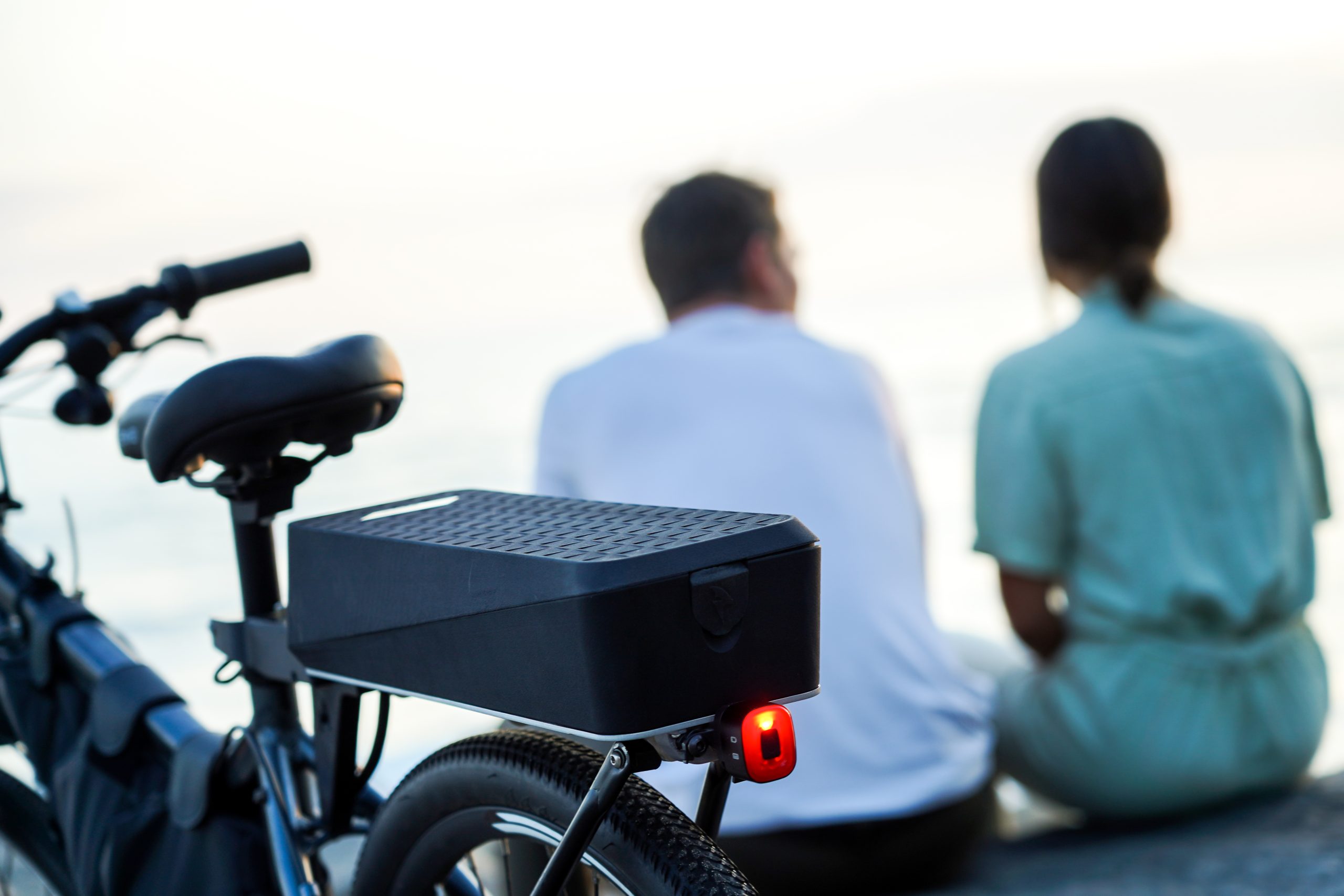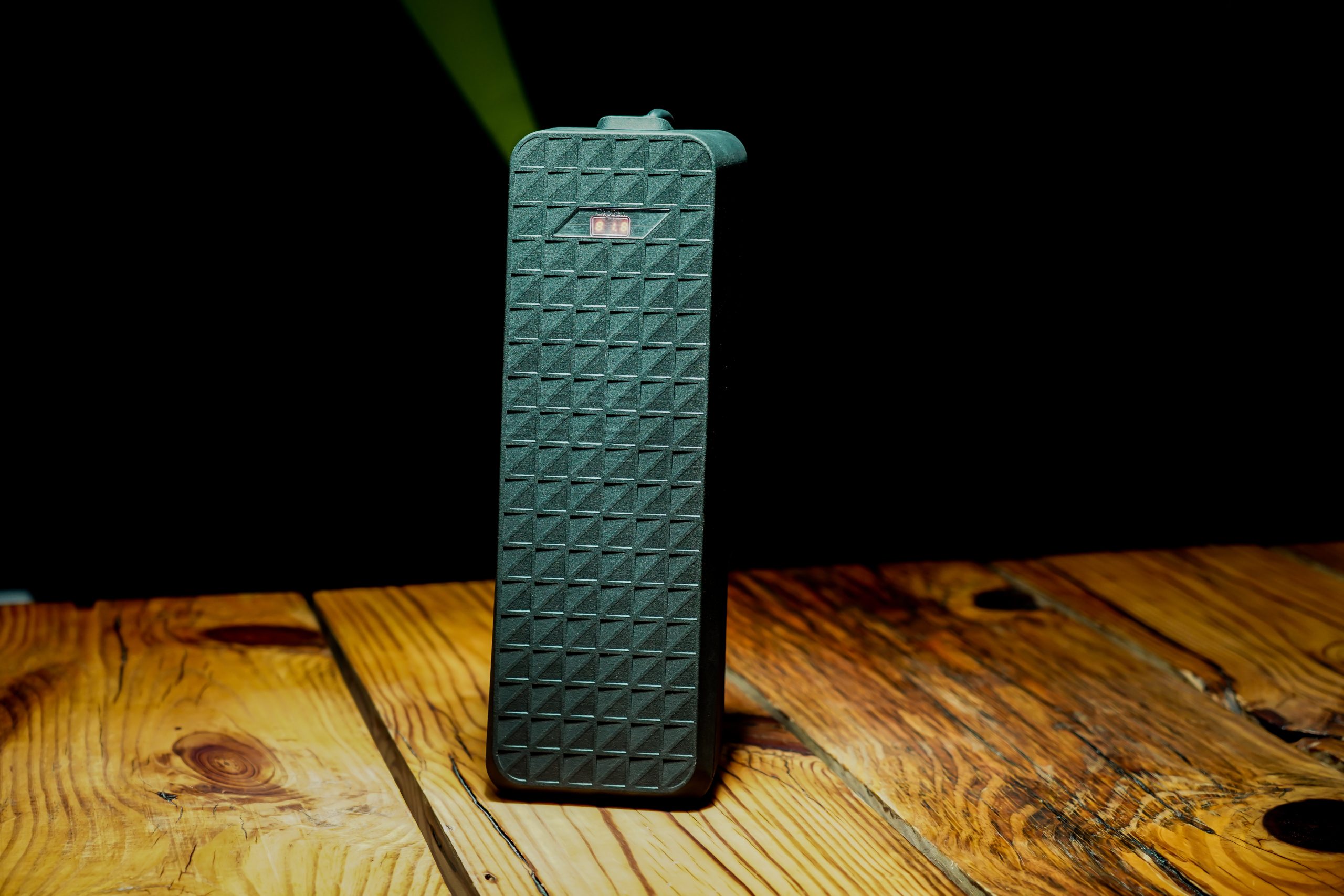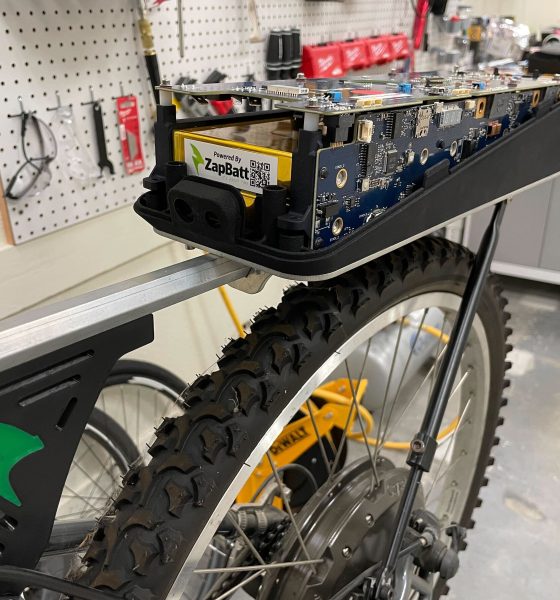ZapBatt and Toshiba are partnering to unlock proven lithium titanium oxide (LTO) battery technology for micro-mobility. In a press release emailed to me, ZapBatt shared that it’s merging its proprietary artificial intelligence technology and next-gen battery hardware with Toshiba’s lithium titanium oxide battery cells.
The goal is to create a new battery option for the micro-mobility marketplace. This will enable LTO batteries to be faster, smarter, and more economical while allowing for real-time battery management and optimization.
Three challenges of using Lithium Titanium Oxide chemistry in batteries solved

Photo credit: ZapBatt
There are three challenges of using LTO chemistry in batteries that ZapBatt is helping Toshiba solve.
- Chips. At the time, chips didn’t exist to work with LTO, however, ZapBatt’s custom LTO battery management system (BMS) is changing this. The BMS works at the unique voltages of LTO with the ability to be re-configured to adapt as the cell chemistry grows. This enables a programmable chip that works with other chemistries and voltages.
- Voltage. ZapBatt has a bi-directional adaptive terminal voltage (BATV) technology. This allows the battery system’s voltage control to be digitally controlled with software. Think of a universal adapter that allows LTO batteries to be a one-for-one swap with any lithium-ion chemistry without the need for modification to the system. The benefit is the ability to re-configure batteries for other applications at software speed.
- Energy Density. ZapBatt will use integrated AI which allows the battery to improve the system’s performance. The AI will analyze how energy is being used. One example is enhanced regenerative braking in e-bikes.
Toshiba & ZapBatt Statements
Greg Mack, Toshiba’s Vice President and General Manager of the Power Electronics Division shared the following statement about the new partnership.
“ZapBatt unlocked the potential of Toshiba’s LTO chemistry for a variety of industries and new markets with disruptive technology, moving away from the ‘miracle battery’ trap and providing a real solution hitting the market today.”
“With ZapBatt’s hardware and software, and our LTO chemistry, there is no other solution as fast, safe, and cost-effective on the market.”
Charlie Welch, CEO and Co-Founder of ZapBatt also shared a statement.
“For global carbon reduction and electrification, we need better battery solutions now, not in ten years. To address this problem, we worked with Toshiba to allow lithium titanium oxide to come alive, bridge into new markets quickly, and provide maximum economic and environmental benefit.”
“Unlike other chemistries, lithium titanium oxide is very efficient in a variety of conditions, not just on a lab bench. It’s like the Seabiscuit of batteries.”
How Toshiba’s Lithium Titanium Oxide Cells Will Work

The company noted that the cells are designed for fast charging and high-power environments with a minimal decrease in function–even after thousands of charges and uses.
These cells are ideal for micro-mobility applications and will provide up to a 100% usable charge without shortening the cycle life. They also perform in freezing temperatures as low as -30 degrees celsius.
The LTO cells also reduce operating expenses and e-waste. And they eliminate the risk of fire with ZapBatt’s LTO system. ZapBatt noted that its LTO batteries have virtually no risk for self-thermal runaway.
In addition to this, ZapBatt pointed out that its combination of machine learning and proprietary hardware will continuously improve battery performance. The software analyzes 26 data points that illustrate how the battery performs to improve charging operations.
ZapBatt’s New Hardware Solution

ZapBatt built a new hardware solution for its LTO BATV system. The BATV system allows the system to control the battery voltage input and output all digitally with software. This allows LTO batteries to integrate with a variety of applications.
Amiad Zionpur, ZapBatt’s Chief Operating Officer shared some thoughts about this technology.
“ZapBatt’s bi-directional adaptive terminal voltage (BATV) technology allows the battery to reconfigure itself based on the customer’s needs, essentially making it a universal adapter that has the potential to change the battery landscape completely.”
“Because of this unique ability, the e-bike battery can be used in many different applications, from micro-mobility to consumer products.”
My Interview With ZapBatt CEO, Charlie Welch
In June, I interviewed Charlie for CleanTechnica in a two-part series. In the first part, which you can read here, Charlie shared how he got started with ZapBatt, the difference between ZapBatt and the overall battery industry, and charging in just 15 minutes.
In the second part of our interview, which you can read here, we spoke about overlooked technologies, the industries that ZapBatt wants to impact, and availability and sustainability.

News
Tesla starts showing how FSD will change lives in Europe
Local officials tested the system on narrow country roads and were impressed by FSD’s smooth, human-like driving, with some calling the service a game-changer for everyday life in areas that are far from urban centers.

Tesla has launched Europe’s first public shuttle service using Full Self-Driving (Supervised) in the rural Eifelkreis Bitburg-Prüm region of Germany, demonstrating how the technology can restore independence and mobility for people who struggle with limited transport options.
Local officials tested the system on narrow country roads and were impressed by FSD’s smooth, human-like driving, with some calling the service a game-changer for everyday life in areas that are far from urban centers.
Officials see real impact on rural residents
Arzfeld Mayor Johannes Kuhl and District Administrator Andreas Kruppert personally tested the Tesla shuttle service. This allowed them to see just how well FSD navigated winding lanes and rural roads confidently. Kruppert said, “Autonomous driving sounds like science fiction to many, but we simply see here that it works totally well in rural regions too.” Kuhl, for his part, also noted that FSD “feels like a very experienced driver.”
The pilot complements the area’s “Citizen Bus” program, which provides on-demand rides for elderly residents who can no longer drive themselves. Tesla Europe shared a video of a demonstration of the service, highlighting how FSD gives people their freedom back, even in places where public transport is not as prevalent.
What the Ministry for Economic Affairs and Transport says
Rhineland-Palatinate’s Minister Daniela Schmitt supported the project, praising the collaboration that made this “first of its kind in Europe” possible. As per the ministry, the rural rollout for the service shows FSD’s potential beyond major cities, and it delivers tangible benefits like grocery runs, doctor visits, and social connections for isolated residents.
“Reliable and flexible mobility is especially vital in rural areas. With the launch of a shuttle service using self-driving vehicles (FSD supervised) by Tesla in the Eifelkreis Bitburg-Prüm, an innovative pilot project is now getting underway that complements local community bus services. It is the first project of its kind in Europe.
“The result is a real gain for rural mobility: greater accessibility, more flexibility and tangible benefits for everyday life. A strong signal for innovation, cooperation and future-oriented mobility beyond urban centers,” the ministry wrote in a LinkedIn post.
News
Tesla China quietly posts Robotaxi-related job listing
Tesla China is currently seeking a Low Voltage Electrical Engineer to work on circuit board design for the company’s autonomous vehicles.

Tesla has posted a new job listing in Shanghai explicitly tied to its Robotaxi program, fueling speculation that the company is preparing to launch its dedicated autonomous ride-hailing service in China.
As noted in the listing, Tesla China is currently seeking a Low Voltage Electrical Engineer to work on circuit board design for the company’s autonomous vehicles.
Robotaxi-specific role
The listing, which was shared on social media platform X by industry watcher @tslaming, suggested that Tesla China is looking to fill the role urgently. The job listing itself specifically mentions that the person hired for the role will be working on the Low Voltage Hardware team, which would design the circuit boards that would serve as the nervous system of the Robotaxi.
Key tasks for the role, as indicated in the job listing, include collaboration with PCB layout, firmware, mechanical, program management, and validation teams, among other responsibilities. The role is based in Shanghai.
China Robotaxi launch
China represents a massive potential market for robotaxis, with its dense urban centers and supportive policies in select cities. Tesla has limited permission to roll out FSD in the country, though despite this, its vehicles have been hailed as among the best in the market when it comes to autonomous features. So far, at least, it appears that China supports Tesla’s FSD and Robotaxi rollout.
This was hinted at in November, when Tesla brought the Cybercab to the 8th China International Import Expo (CIIE) in Shanghai, marking the first time that the autonomous two-seater was brought to the Asia-Pacific region. The vehicle, despite not having a release date in China, received a significant amount of interest among the event’s attendees.
Elon Musk
Elon Musk and Tesla AI Director share insights after empty driver seat Robotaxi rides
The executives’ unoccupied tests hint at the rapid progress of Tesla’s unsupervised Robotaxi efforts.

Tesla CEO Elon Musk and AI Director Ashok Elluswamy celebrated Christmas Eve by sharing personal experiences with Robotaxi vehicles that had no safety monitor or occupant in the driver’s seat. Musk described the system’s “perfect driving” around Austin, while Elluswamy posted video from the back seat, calling it “an amazing experience.”
The executives’ unoccupied tests hint at the rapid progress of Tesla’s unsupervised Robotaxi efforts.
Elon and Ashok’s firsthand Robotaxi insights
Prior to Musk and the Tesla AI Director’s posts, sightings of unmanned Teslas navigating public roads were widely shared on social media. One such vehicle was spotted in Austin, Texas, which Elon Musk acknowleged by stating that “Testing is underway with no occupants in the car.”
Based on his Christmas Eve post, Musk seemed to have tested an unmanned Tesla himself. “A Tesla with no safety monitor in the car and me sitting in the passenger seat took me all around Austin on Sunday with perfect driving,” Musk wrote in his post.
Elluswamy responded with a 2-minute video showing himself in the rear of an unmanned Tesla. The video featured the vehicle’s empty front seats, as well as its smooth handling through real-world traffic. He captioned his video with the words, “It’s an amazing experience!”
Towards Unsupervised operations
During an xAI Hackathon earlier this month, Elon Musk mentioned that Tesla owed be removing Safety Monitors from its Robotaxis in Austin in just three weeks. “Unsupervised is pretty much solved at this point. So there will be Tesla Robotaxis operating in Austin with no one in them. Not even anyone in the passenger seat in about three weeks,” he said. Musk echoed similar estimates at the 2025 Annual Shareholder Meeting and the Q3 2025 earnings call.
Considering the insights that were posted Musk and Elluswamy, it does appear that Tesla is working hard towards operating its Robotaxis with no safety monitors. This is quite impressive considering that the service was launched just earlier this year.










